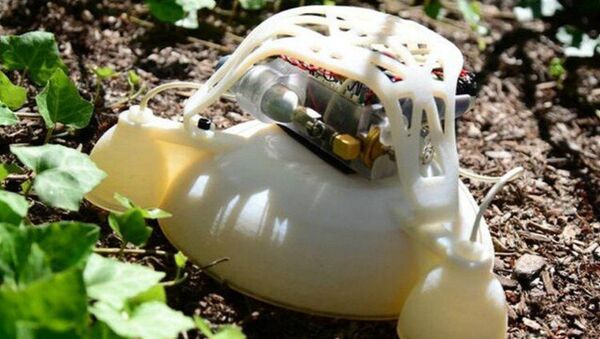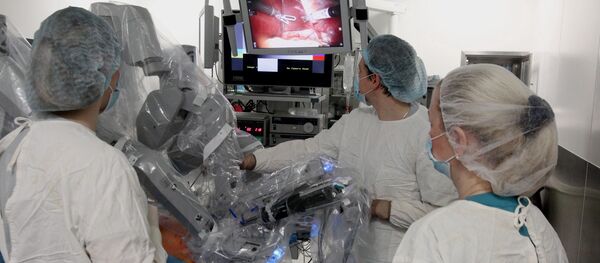"But for practical reasons, our soft robots typically have some rigid components — things like batteries and control electronics. This robot is a demonstration of a method to integrate the rigid components with the body of the soft robot through a gradient of material properties, eliminating an abrupt, hard-to-soft transition, that is often a failure point."
The robot is powered by igniting butane and oxygen, which allows it to jump up to six times its body height, a useful ability in unpredictable environments or areas with many obstacles.
Its soft body, 3D-printed as one complete piece, allows it to survive large falls or other mishaps which could happen during the course of a search and rescue operation, and prevents dirt or debris from getting in, an affliction which affects robots that have pieced together traditionally.
"Initially, our soft robot systems used pneumatic pressure to actuate," explained Robert Shepherd, one of the researchers who developed the model.
"While that system worked, it was rather slow — it took on the order of a second. Using combustion, however, allows us to actuate the robots very fast. We were able to measure the speed of the robot’s jump at 4 meters per second."
The latest incarnation of the leaping technology, described by the team from Harvard University in the July 10 issue of the journal Science, is a further development of a version the researchers described in an article published in the journal Soft Robotics last year, called "A Resilient, Untethered Soft Robot."
"The material, and monolithic design, of our untethered soft robot enable it to withstand a variety of harsh environmental conditions against which traditional robots must be carefully protected," wrote the scientists, explaining that the robot's 3D-printed silicone body is capable of resisting puddles, snow, direct exposure to flames, and "the crushing force of being run over by an automobile."



